Technology is changing the world faster than ever, and one of the most exciting areas of innovation is robotics. For people with disabilities, robotics is not just about convenience—it is about independence, dignity, and new opportunities. From advanced prosthetic limbs to robotic wheelchairs, these innovations are helping individuals regain control over their lives in ways that were once unimaginable.
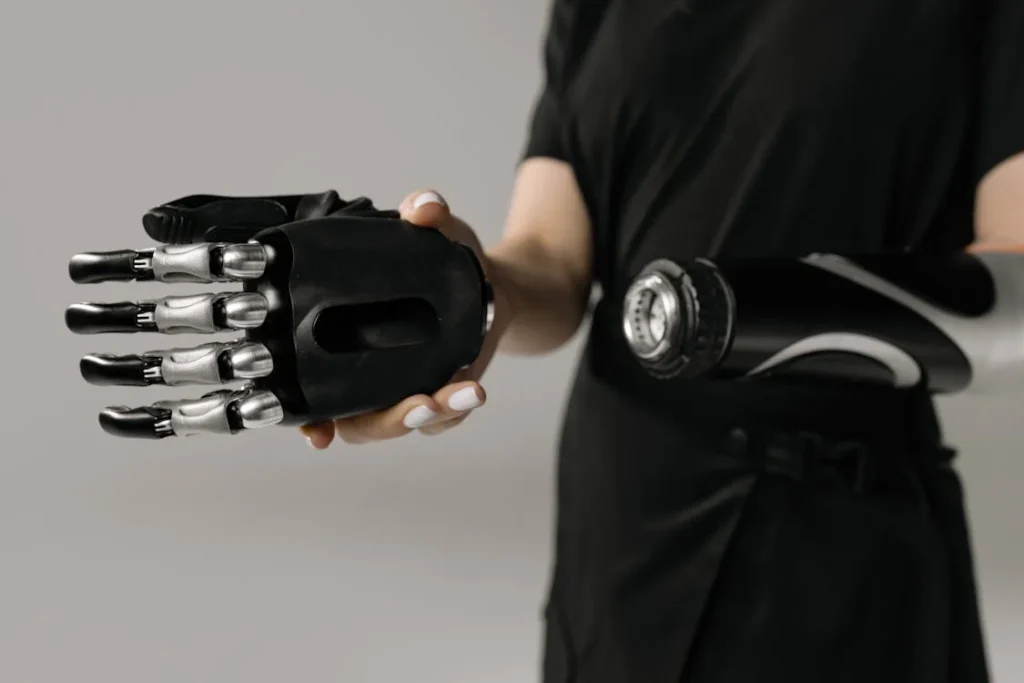
The Role of Robotics in Accessibility
Robotics is playing a major role in improving accessibility for people with disabilities. Every year, new advancements in robotic technology make it possible for individuals to live more independently.
These innovations are not just about helping with physical movement; they also improve communication, daily living, and even employment opportunities.
One of the most impactful areas of robotics is assistive technology. Robotic prosthetics, for example, have completely changed the way people with limb loss experience the world.
Unlike traditional prosthetics, which are often limited in movement and control, robotic limbs use sensors, artificial intelligence, and muscle signals to provide a natural and intuitive experience.
A person wearing a bionic hand, such as Grippy™ by Robobionics, can open and close their fingers, hold objects, and even feel textures through sensory feedback. This level of control helps users regain confidence and independence in their everyday lives.
Another way robotics is transforming accessibility is through smart wheelchairs. Traditional wheelchairs require manual control or basic electric assistance, but modern robotic wheelchairs go beyond that.
They can navigate spaces autonomously, avoid obstacles, and even connect to voice commands or eye-tracking systems for people with limited mobility.
These wheelchairs enable individuals to move freely in their homes, workplaces, and public spaces without constant assistance from others.
Exoskeletons are another groundbreaking innovation in accessibility. These wearable robotic suits help individuals with paralysis or muscle weakness regain movement.
Exoskeletons use motors and sensors to support and enhance the body’s natural motion, allowing people to stand, walk, and climb stairs.
While these devices are still being developed for everyday use, they are already showing incredible results in rehabilitation centers, helping individuals rebuild strength and mobility.
How Robotics Is Enhancing Communication
For individuals with speech or hearing impairments, robotics is also making communication easier. Advanced speech-generating devices, powered by artificial intelligence, allow people who cannot speak to express themselves through text-to-speech systems.
These devices can adapt to a person’s unique communication patterns, making conversations smoother and more natural.
Robotic sign language interpreters are also being developed to bridge the communication gap between hearing and non-hearing individuals.
These systems use cameras and artificial intelligence to interpret sign language and convert it into spoken words in real-time. This makes public services, education, and workplaces more inclusive for people with hearing impairments.
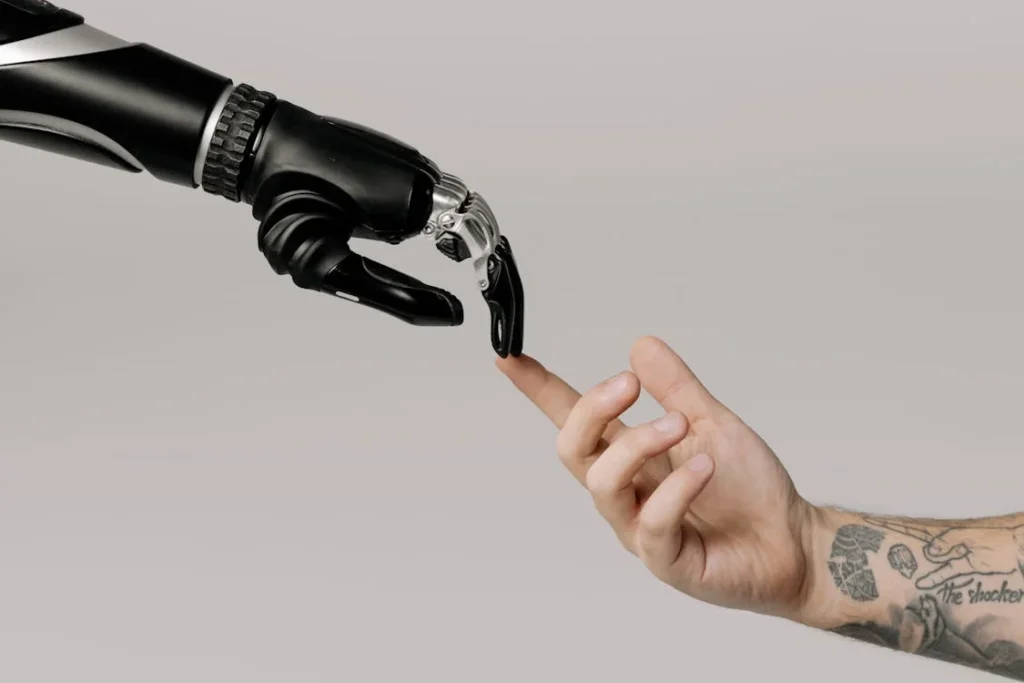
Robotics in Daily Life and Independence
Robotics is not just improving mobility and communication—it is also transforming the way people with disabilities handle everyday tasks.
Simple activities like cooking, cleaning, and personal care, which may have once required assistance from caregivers, are now easier with the help of robotic technology.
One of the most life-changing developments is the rise of robotic home assistants. These devices use artificial intelligence and voice recognition to help people complete tasks around the house.
Smart home systems connected to robotic assistants can turn lights on and off, adjust the temperature, lock doors, and even operate kitchen appliances.
For individuals with limited mobility, this level of control allows them to live more independently without relying on constant assistance from others.
In the kitchen, robotic arms are now being designed to help individuals cook meals safely. These robotic systems can chop vegetables, stir pots, and even pour drinks with precision.
This kind of technology makes meal preparation accessible for people with limited dexterity. Combined with smart appliances, such as ovens and stoves that can be controlled with voice commands, cooking has become a much easier and safer task.
Cleaning is another area where robotics is making a huge impact. Robotic vacuum cleaners and mops can navigate through rooms and clean floors automatically.
This technology is particularly useful for individuals with mobility impairments who may struggle with traditional cleaning tasks. By using sensors and artificial intelligence, these devices can detect dirt, avoid obstacles, and even return to their charging stations when needed.
For personal care, robotic assistance is also becoming a reality. Robotic arms and adaptive devices are being developed to help individuals with dressing, grooming, and hygiene.
Smart shower systems allow users to control water temperature and pressure with voice commands or touchless controls, making personal hygiene more accessible for people with physical disabilities.
In addition, robotic feeding devices are helping individuals who have difficulty using their hands to eat independently, restoring dignity and confidence in daily life.
How Robotics Is Revolutionizing Transportation
Transportation has always been one of the biggest challenges for people with disabilities. Public transport is often not fully accessible, and personal mobility options can be expensive or difficult to operate.
Robotics is changing this by introducing smarter, more user-friendly mobility solutions.
Self-driving cars are one of the most promising advancements in accessible transportation. These autonomous vehicles use artificial intelligence, cameras, and sensors to navigate roads without human intervention.
For individuals who are unable to drive due to physical disabilities, self-driving cars offer a new level of independence.
Although fully autonomous vehicles are still in the testing phase, the technology is rapidly evolving and is expected to become widely available in the near future.
Robotic ride-sharing services are also being developed to make transportation easier. These services use autonomous vehicles that can be summoned through a smartphone app.
Unlike traditional ride-sharing services, robotic taxis do not require a driver, making them a more accessible and inclusive option for individuals with mobility impairments.
In public transportation, robotics is also being used to make buses, trains, and metro stations more accessible. Smart ramps and automated wheelchair lifts are now being integrated into vehicles, allowing individuals to board without assistance.
Some transit systems are also experimenting with robotic assistants that help passengers navigate stations, find their routes, and access information through touchscreens or voice commands.
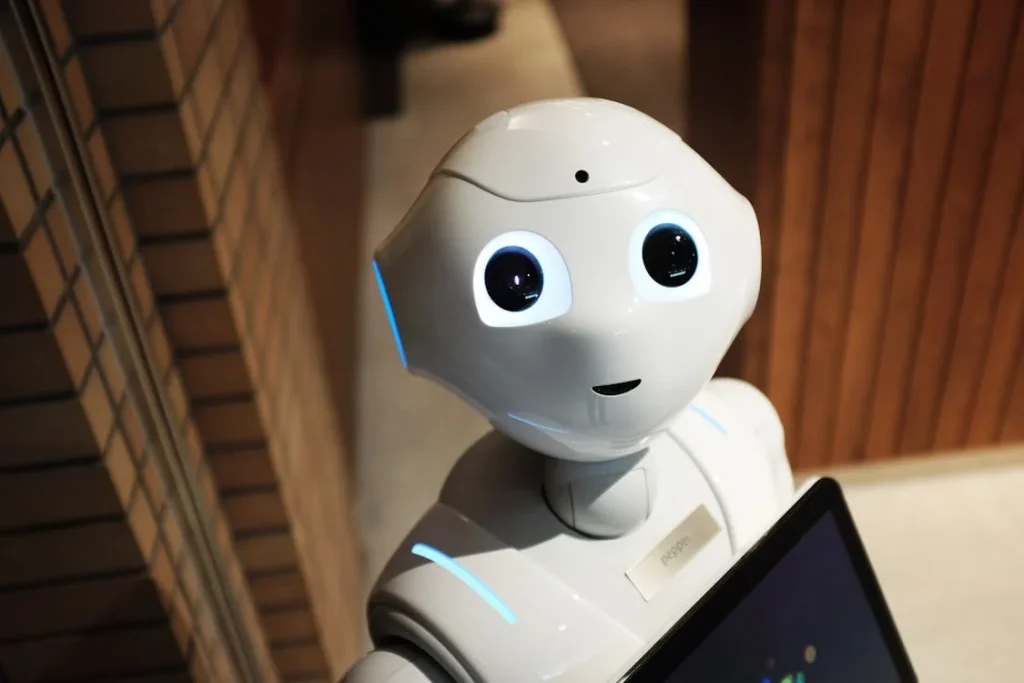
Robotics in Employment and Education
For many people with disabilities, finding employment and accessing education can be challenging due to physical barriers and a lack of inclusive infrastructure.
Robotics is breaking down these barriers, creating new opportunities for individuals to work, learn, and contribute to society in ways that were previously difficult or impossible.
In the workplace, robotic assistants are helping employees with disabilities perform tasks more efficiently.
Adaptive robotic arms can assist with typing, writing, and assembling products, making it easier for individuals with limited hand function to complete their work independently.
Voice-activated AI assistants are also improving productivity by allowing people to control computers, send emails, and access important documents without needing to use a keyboard or mouse.
Remote work has also become more accessible thanks to robotics. Telepresence robots, which allow individuals to be virtually present in an office or classroom, are changing the way people with mobility challenges engage in professional and academic settings.
These robots move around spaces in real-time, displaying a person’s face and voice through a screen. This allows employees and students to attend meetings, interact with colleagues, and participate in discussions as if they were physically present.
How Robotics Is Creating Inclusive Learning Environments
Education is another area where robotics is making a huge impact. In schools and universities, robotic teaching assistants are helping students with disabilities receive personalized support.
These AI-powered systems can adapt to a student’s learning style, providing extra help in subjects like math, science, and reading.
For students with mobility impairments, robotic writing aids are making note-taking easier. These devices can transcribe lectures in real-time or convert spoken words into text, allowing students to keep up with lessons without struggling with handwriting or typing.
Additionally, robotic tutors can provide one-on-one support, using interactive technology to teach subjects in a more engaging way.
In special education programs, robotics is being used to support students with autism and other developmental disabilities. Social robots, designed to recognize emotions and respond appropriately, are helping children improve their communication and social skills.
These robots can guide students through exercises that teach eye contact, facial expressions, and conversation skills in a comfortable and structured way.
Robotics and Accessibility in Higher Education
Higher education is also becoming more inclusive thanks to robotics. Universities are using robotic technologies to create accessible campuses, where students with disabilities can navigate classrooms, dorms, and common areas with ease.
Automated doors, robotic mobility aids, and AI-powered navigation apps are ensuring that all students have equal access to learning spaces.
Some universities are also incorporating robotics into their curriculum, encouraging students with disabilities to explore careers in science, technology, engineering, and mathematics (STEM).
By providing hands-on experience with robotics and artificial intelligence, these programs are empowering students to develop their own accessibility solutions, driving innovation for future generations.
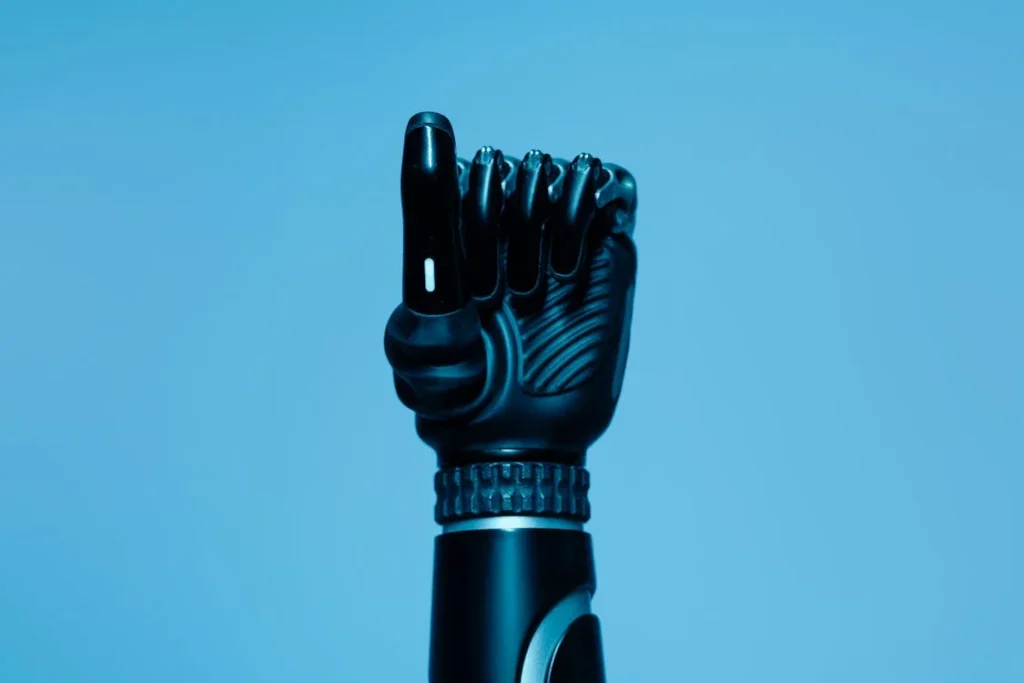
The Future of Robotics in Accessibility
Robotics is advancing at an incredible pace, and the future looks even more promising for people with disabilities. As technology continues to evolve, we can expect even more life-changing innovations that will further improve mobility, communication, independence, and inclusion.
One of the most exciting developments is the integration of artificial intelligence with robotics. AI-powered prosthetics and assistive devices are becoming smarter, allowing users to perform tasks with greater precision and ease.
Future bionic limbs will have enhanced sensory feedback, giving users the ability to “feel” what they are touching. This will create a more natural experience, making prosthetic hands and legs even more responsive.
Robotic exoskeletons are also expected to become more lightweight, affordable, and widely available.
Currently, these devices are primarily used in rehabilitation centers, but in the coming years, they could become a regular part of everyday life for individuals with mobility impairments.
As battery technology and materials improve, exoskeletons will offer greater freedom of movement, allowing people to walk longer distances with less effort.
Advancements in Smart Home Robotics
Smart home robotics is another area that will continue to grow. Future homes will be equipped with AI-driven assistants that can anticipate needs and provide real-time assistance.
Imagine a robotic system that automatically adjusts furniture, prepares meals, or assists with dressing based on a person’s preferences and abilities.
These smart home technologies will help individuals with disabilities live even more independently, reducing the need for human caregivers.
Voice-activated AI assistants are also set to become more intuitive, understanding natural language and responding more accurately.
These systems will be able to provide reminders for medication, schedule appointments, and even offer companionship, helping individuals stay connected and engaged in their communities.
Transportation and Robotics in Public Spaces
Autonomous transportation is another area where robotics is expected to make a significant impact. Self-driving cars will become more advanced, offering safe and efficient travel for individuals who cannot drive.
These vehicles will be equipped with AI systems that recognize passengers’ needs, automatically adjusting seating, climate control, and navigation settings for optimal comfort and accessibility.
Public spaces will also become more inclusive with the help of robotic technology.
Smart navigation systems, robotic guides, and AI-powered accessibility tools will make it easier for individuals with disabilities to move through cities, use public transportation, and access essential services without barriers.
The Role of Robotics in Healthcare and Rehabilitation
Robotics is also transforming healthcare and rehabilitation. Robotic therapy devices are already being used to help individuals regain movement after injuries or medical conditions such as strokes.
In the future, these systems will become even more personalized, using real-time data to adjust therapy sessions based on an individual’s progress.
Surgical robotics is another area that will continue to evolve. Robot-assisted surgeries are already improving precision and reducing recovery times, but new advancements could make medical procedures even more accessible for individuals with disabilities.
AI-powered diagnostic tools will also help detect health conditions earlier, leading to faster and more effective treatments.
Emphasizing Affordability and Accessibility
One of the biggest challenges in assistive robotics has been cost. Many advanced robotic prosthetics and assistive devices are expensive, making them inaccessible to those who need them most.
However, companies like Robobionics are working to change that by creating high-quality, affordable prosthetic solutions that are designed for local needs.
As technology becomes more widespread, costs are expected to decrease, making robotic accessibility tools more affordable for people around the world.
The future of robotics in accessibility is not just about innovation—it is about ensuring that everyone, regardless of their physical abilities, has the opportunity to live a fulfilling and independent life.
With continuous advancements in AI, prosthetics, and mobility solutions, robotics is paving the way for a more inclusive world where disability is no longer a limitation but simply a different way of experiencing life.
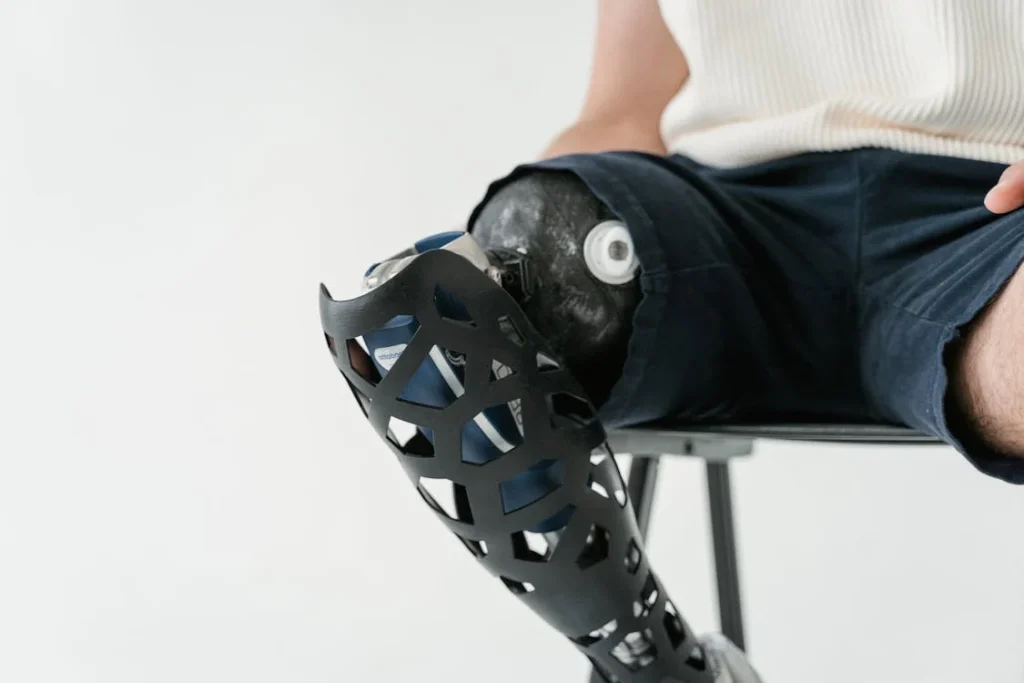
The Social and Emotional Impact of Robotics on People with Disabilities
Beyond improving mobility, independence, and communication, robotics is also playing a crucial role in enhancing the social and emotional well-being of people with disabilities.
Living with a disability can sometimes lead to feelings of isolation, dependence, or a lack of confidence. However, robotics is changing that narrative by creating opportunities for greater social inclusion, self-expression, and engagement in activities that were once out of reach.
Boosting Confidence and Independence
One of the most significant emotional benefits of robotics is the boost in self-confidence it provides.
When an individual can complete tasks independently—whether it’s shaking someone’s hand with a bionic arm, moving freely in a robotic wheelchair, or navigating a space with a robotic guide—there is a sense of empowerment.
This autonomy allows people to participate more actively in society, leading to greater self-esteem and a more positive self-image.
For example, robotic prosthetics like Grippy™ from Robobionics do more than just restore hand function. They help users regain their ability to perform daily activities, interact naturally with others, and feel more in control of their lives.
This shift in independence reduces the need for constant assistance, allowing individuals to pursue hobbies, education, and careers with newfound confidence.
Strengthening Social Connections
Social interactions can sometimes be challenging for people with disabilities due to physical barriers or communication difficulties. Robotics is helping to bridge this gap by making social spaces more inclusive and accessible.
For individuals with speech impairments, AI-powered voice synthesizers and robotic communication devices enable more fluid conversations, allowing them to express themselves freely.
Social robots, designed to recognize emotions and respond accordingly, are also being used to support children with autism by helping them practice social interactions in a comfortable, structured way.
These robots can guide users through conversation exercises, teach emotional recognition, and provide companionship in a way that feels natural and supportive.
Additionally, robotic exoskeletons and mobility aids allow individuals to participate in social events, travel, and engage in community activities without barriers.
The ability to attend gatherings, move independently through public spaces, and engage with others fosters a sense of belonging, which is essential for emotional well-being.
Expanding Opportunities for Recreation and Sports
Sports and recreational activities have long been a challenge for individuals with physical disabilities, but robotics is making participation more accessible.
Adaptive robotic technology is allowing individuals to take part in activities like running, swimming, and even competitive sports.
Robotic prosthetics designed for athletics, such as bionic running blades, give individuals with limb loss the ability to compete at high levels.
Similarly, robotic exoskeletons are helping individuals with paralysis experience movement-based activities like hiking or dancing.
These technologies not only enhance physical fitness but also provide a sense of freedom and accomplishment that positively impacts mental health.
Emotional Support Through Robotics
Companion robots are another emerging innovation in emotional well-being. Designed to provide comfort and companionship, these robots are particularly beneficial for individuals who experience isolation or require emotional support.
Some robotic companions can recognize human emotions, respond to moods, and even hold simple conversations.
While they do not replace human connections, they can provide comfort, entertainment, and a sense of companionship for those who may feel lonely or socially disconnected.
Encouraging a Shift in Society’s Perception of Disability
As robotics continues to improve accessibility, it is also changing how society views disability. Advanced prosthetics, robotic mobility aids, and AI-powered communication tools are shifting the focus from limitations to possibilities.
Instead of seeing disability as a barrier, society is beginning to recognize it as a different way of interacting with the world—one that can be enhanced through innovation and technology.
By increasing visibility and representation, robotics is helping to break down stereotypes and promote inclusion.
As more individuals with disabilities gain access to robotic assistive technology, they are taking on roles in education, business, sports, and the arts, showing the world that they are just as capable and talented as anyone else.

Robotics and Accessibility in the Workplace
Workplaces around the world are becoming more inclusive, thanks to robotics and assistive technology. In the past, individuals with disabilities often faced challenges in professional settings due to physical barriers, lack of adaptive tools, or limited accessibility.
However, robotics is transforming the way people with disabilities engage in the workforce, creating more opportunities for employment, career growth, and financial independence.
How Robotics is Making Workplaces More Accessible
One of the most significant advancements is the use of robotic assistive devices that help employees perform tasks that may have been difficult or impossible before.
Robotic arms, for example, can assist individuals with limited mobility in tasks like typing, assembling products, or handling delicate instruments. These devices allow employees to work more efficiently without relying on constant support.
AI-powered voice recognition systems are also revolutionizing accessibility in the workplace. Employees who have difficulty using keyboards or mice can now control computers and software through voice commands.
This makes it easier for individuals with motor impairments to write reports, send emails, and navigate digital workspaces effortlessly.
For employees with visual impairments, robotic assistants equipped with AI-driven speech technology can read out text, identify objects, and describe surroundings in real-time.
These innovations help individuals navigate their workplaces confidently, reducing the need for external assistance.
Telepresence Robots and Remote Work
With the rise of remote work, telepresence robots are becoming an essential tool for employees with disabilities. These robots allow individuals to attend meetings, interact with colleagues, and move around office spaces virtually.
Controlled remotely, telepresence robots feature a screen displaying the user’s face, allowing them to engage in conversations as if they were physically present.
This technology is particularly useful for individuals who experience mobility limitations or fatigue from traveling.
By providing a way to be fully present in the workplace without the need for physical commuting, telepresence robots enable employees to contribute effectively while working from the comfort of their homes.
Career Opportunities in Robotics and AI
Robotics is not only helping people with disabilities join the workforce—it is also opening doors for them to work in technology and innovation.
Many individuals with disabilities are pursuing careers in robotics, artificial intelligence, and engineering, using their firsthand experiences to design more effective assistive technologies.
Universities and organizations are now offering specialized training programs in robotics and AI, encouraging individuals with disabilities to become leaders in these fields.
By actively participating in the development of robotic assistive tools, individuals with disabilities are shaping the future of accessibility and inclusion.
Inclusive Hiring Practices and the Role of Technology
More companies are recognizing the importance of inclusive hiring practices, and robotics is playing a key role in making workplaces more welcoming.
AI-powered hiring tools are helping businesses create fairer recruitment processes by focusing on skills and qualifications rather than physical abilities.
Additionally, robotic workplace assistants are making it easier for employees with disabilities to perform daily tasks independently, reducing workplace stigma and increasing confidence.
With robotic technology supporting accessibility, businesses are becoming more diverse, benefiting from the unique talents and perspectives that individuals with disabilities bring to the workforce.
Conclusion
Robotics is transforming accessibility for people with disabilities, breaking barriers and creating new opportunities for independence, mobility, and inclusion. From advanced prosthetic limbs to AI-powered communication tools, these innovations are improving lives in ways that were once unimaginable. Robotics is not just about assistance—it is about empowerment, giving individuals the ability to navigate the world on their own terms.
As technology continues to evolve, the future looks even brighter. Smarter prosthetics, autonomous transportation, and AI-driven workplace solutions will further enhance accessibility, ensuring that people with disabilities have the same opportunities as everyone else. Companies like Robobionics are leading the way by making cutting-edge prosthetic solutions more affordable and accessible.
The impact of robotics goes beyond physical improvements; it is reshaping society’s view of disability, promoting inclusion, and encouraging greater participation in education, employment, and social activities. As innovation continues, we move closer to a world where disabilities are no longer seen as limitations, but as part of a diverse and capable human experience.
Are you ready to experience the future of prosthetics? Book a free demo of Grippy™ today and take the first step towards greater independence!



